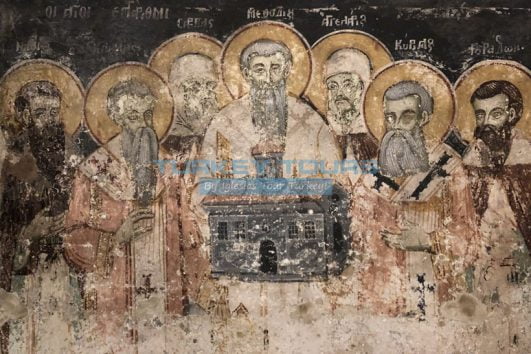PERGAMON ALTAR OF ZEUS!
The reliefs of the famous altar were noticed by chance by the German engineer Carl Humann, who undertook the construction of a railway that was wanted to be passed here in 1871. Upon this incident, excavations were started in 1878 with the permission of the Germans from the Ottoman government.
During the four-year excavations, 132 panels + 2100 pieces of marble reliefs of the Altar of Zeus at Pergamon showing the battles between the Gods and the Giants (Titans) and some other architectural pieces were taken to Berlin. With the restoration and reconstruction works carried out in Berlin, replicas were made and brought to Bergama and assembled.
However, *the point is* while the originals should have been brought to Bergama, the replicas were brought. Today, the original Altar of Zeus consists of one of the most important halls of the Berlin Pergamon Museum.
This altar, built on an area of 69×77 meters in the Hellenistic Age, was undoubtedly known as the most magnificent structure of the Pergamon Acropolis. Above all, as the Roman historian, Lucius Ampelius wrote four hundred years after the construction of the altar; Since this work was made in the name of Zeus, the father of the gods, it was one of the most important works of the ancient period.
In addition to its architectural structure, what made the altar famous was the extraordinary reliefs and friezes showing the war of the Gods and Giants called “Gigantomakhie” on the outer walls. The architectural structure of the altar, which is known to be built as a debt of Pergamon to Zeus, the father of the gods, after the great victory over the Galatians in the time of King Eumenes-II, resembled the shape of a horseshoe.
The main door, built in the type of propylon, providing access to the altar area was on the east side. As it was understood from the researches, this monumental altar could be easily seen from all sides since no other buildings were built around it.
The Zeus Altar was the most important example of the superior stage that the Ancient Pergamon School has gone through in the field of art & architecture. Because one of the most important artistic achievements of the Hellenistic Age was revealed by combining the architectural and sculpting arts of that period in this structure.
To keep reading about Pergamon, click the link below; Pergamon!










